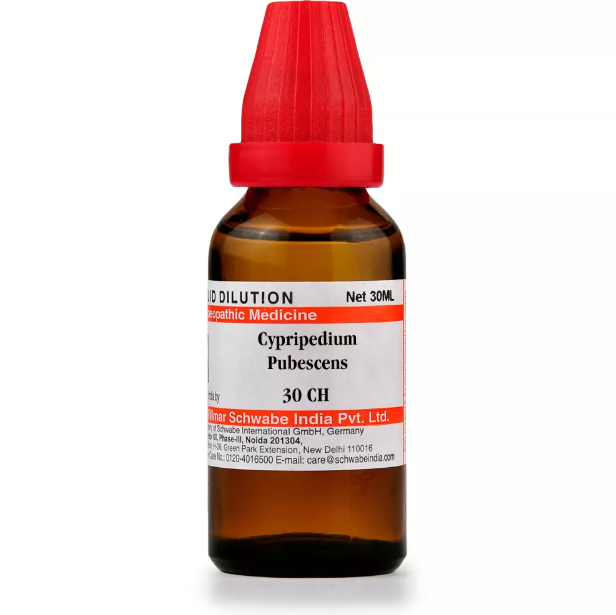CYPRIPEDIUM PUBESCENS Q, 6C, 12C, 30C, 200C, 1M, 10M USES AND SYMPTOMS
 CYPRIPEDIUM PUBESCENS
CYPRIPEDIUM PUBESCENS
(Yellow Lady’s Slipper)
Cypr.
The skin symptoms match those of Rhus poisoning, for which it is an effective antidote. It addresses nervousness in children caused by teething and digestive issues, weakness after gout, and hydrocephaloid symptoms due to prolonged diarrhea. It also helps with sleeplessness and cerebral hyperesthesia in young children from brain overstimulation.
Head:
Children cry out at night, wake up, and start laughing and playing. It is useful for headaches in the elderly and during menopause.
Relationship:
Compare with Ambr., Kali-br., Scut., Valer., Ign. Skin relatives include Grin., and Anac.
Dose:
Tincture to sixth attenuation. For poison oak, take 5 drops of tincture per dose, and apply locally.
SYMPTOMS OF CYPRIPEDIUM PUBESCENS
Skin Symptoms: Similar to those of Rhus poisoning.
Nervousness in Children: From teething and digestive issues.
Debility: Following gout.
Hydrocephaloid Symptoms: Resulting from prolonged diarrhea.
Sleeplessness
Cerebral Hyperesthesia in Young Children: Often due to brain overstimulation.
Head:
Children crying out at night, waking up, and beginning to laugh and play.
Headaches in elderly people and during menopause.
selection of the potency
Individualization:
- Homeopathy is based on the principle of treating the individual, not just the disease. The unique symptoms and characteristics of the person are crucial in determining the most suitable potency.
Intensity of Symptoms:
- The intensity of the symptoms guides the choice of potency. If the symptoms are intense and acute, a lower potency (e.g., 6C, 30C) might be considered. For chronic conditions with less intensity, higher potencies (e.g., 200C, 1M) may be appropriate.
Sensitivity of the Patient:
- Some individuals are more sensitive to homeopathic remedies, while others may require higher potencies. The practitioner considers the patient’s sensitivity when selecting the potency.
Acute vs. Chronic Conditions:
- Lower potencies are often used for acute conditions, while higher potencies may be considered for chronic or long-standing issues.
Previous Response to Potencies:
- The patient’s response to previous homeopathic treatments helps guide the choice of potency. If a particular potency has been effective in the past, it may be repeated or adjusted as needed.
Vital Force and Susceptibility:
- Homeopathy views illness as a disturbance in the vital force. The practitioner assesses the patient’s overall vitality and susceptibility to determine the appropriate potency.
Aggravation or Amelioration:
- The direction of the symptom response (aggravation or amelioration) after taking a remedy can influence the choice of potency.
Miasmatic Considerations:
- In classical homeopathy, the concept of miasms (inherited disease tendencies) is considered. The practitioner take this into account when selecting the potency.
Practitioner Experience:
- The experience and preference of the homeopathic practitioner play a role. Some practitioners may have success with certain potencies based on their clinical experience.
SAFETY INFORMATION
- Do not exceed the recommended dose by physician
- Keep out of the reach of children
- Store in a cool dry place away from direct sunlight
- Maintain half an hour gap between food/drink/any other medicines and homoeopathic medicine
- Avoid any strong smell in the mouth while taking medicine e.g. camphor, garlic, onion, coffee, hing
Medicine images use for reference only selection of homeopathic medicine depends on the individual’s specific symptoms and overall constitution. Moreover, homeopathy is a holistic system of medicine that treats the individual as a whole. In addition to addressing the physical symptoms, it takes into account the emotional and mental state of the person. Consequently, it’s crucial to consult with a qualified homeopathic practitioner for personalized treatment.
The information provided on this website is intended solely for educational purposes. Always seek the advice of your physician or other qualified health provider.
